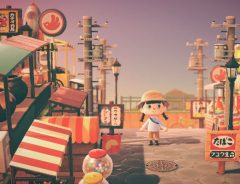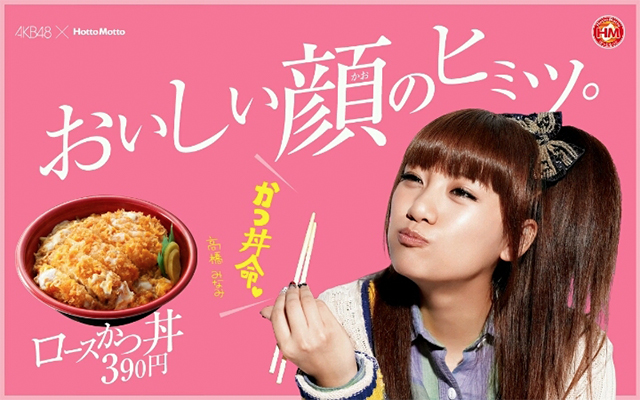- Tags:
- Japan / Limited Edition
Related Article
-

The Incredible Sci-Fi and Fantasy Illustrations of Japanese Character Designer PALOW
-

Adorably expressive cat makes remarkably funny faces when playing with (and missing) his favorite toy
-

Players make charming retro Showa era Japan islands in Animal Crossing: New Horizons
-

Rigid Rules Of Japanese Drinking Parties Broken Up By A Special A.I. Powered Fan–And Delicious Beer[PR]
-

To Celebrate Mobile Suit Gundam’s 40th Anniversary, Zaku Pool Floats And Haro Beach Balls
-

Chubby Seal Body Cushion And Baby Seal Themed Pillow Cases Are The Most Adorable Cuddle Buddies




The phrases “while supplies limited” or “for a limited time only” is often used when advertising special offers but, in Japan it seems to take on a much more urgent meaning. Terms like “kikan gentei” (期間限定, limited for a time period), “gentei-ban” (限定版, limited edition), “kisetsu gentei” (季節限定, seasonal), or “shokai saisei” (初回生産, first-press/run) can be found on everything from clothing to food items. While this can be seen as a lot of hype, it allows for a lot of experimentation when it comes to creating unusual and exciting products. It is because of this that the word “gentei” can be like Kryptonite, rendering them helpless to do anything but open their wallet and buy!
Even though many countries around the world have 4 seasons, Japanese people are especially proud of this fact because of the connotations that come with them and the idea that certain foods taste the best during certain times of the year. Summer means things like Ramune, watermelon, somen, hiyashi chuka, kakigoori, and unagi. Autumn is strongly tied to chestnuts, sweet potatoes, persimmons, and pears. In the winter, oden, nabe, corn potage, tangerines, and of course, fried chicken for Christmas. When spring comes sakura mochi (and just about anything else sakura-flavored), ume, strawberries, and bamboo shoots make their appearance.
With the growth of tourism and efforts to promote rural areas, every place has a meibutsu (名物, famous dish/item) that they are known for. In the video above, Niigata natives Negicco and Sashiko Kobayashi mention several famous products and events in the song “Niigata★JIMAN!”.
Tsukishima (Tokyo) is packed with monjayaki restaurants; Utsunomiya (Tochigi) has more varieties of gyoza than one could possibly eat in one sitting; Osaka and Hiroshima have a friendly rivalry over okonomiyaki; Sendai (Miyagi) equals beef tongue (is the rest of the cow not that tasty?); Okinawa has bittermelon, sweet potatoes, chinsuko, and sata andagi. It is possible to find a lot of these foods in big cities like Tokyo but it’s not the same as going to Tochigi to pick your own tochiotome strawberries or the backstreets of Osaka to have okonomiyaki, takoyaki, or kushi-katsu. Of course, there is no lack of gift shops in a lot of these areas for those who want to take something back home.
On the opposite end of the spectrum, sometimes brands will see just how far they can push the boundaries of taste. Similar to how Jones Soda or Jelly Belly will come out with several unusual flavors, chips, ice cream, soft drinks, and other snacks in Japan are fair game when it comes to limited runs.
Gari Gari Kun is famous (notorious) for releasing Corn Potage, Napolitan, and Cream Stew flavored popsicles. Häagen-Dazs launched a line of vegetable-flavored ice creams (Tomato-Cherry and Carrot-Orange) but it’s difficult to say that even Kou Shibasaki could make something like that appetizing.
Pepsi came out with Shiso, Baobab, Mont Blanc, Cucumber, and Azuki, just to name a few.
Cheetos, Doritos, and Pringles have also been given the “why not?” treatment from time to time.
This doesn’t just happen for food. When Tokyo Station released a limited run of Suica IC cards to celebrate their 100th anniversary in 2014 they were besieged by over 9,000 people. As a result, sales were halted and online reservations began in January of 2015.
You can go to just about any gift shop somewhere in Japan and find a localized and exclusive phone strap or keychain from Hello Kitty.
With 6 of the 10 Supreme stores in the world located in Japan, it’s not unusual to see people camped out on the sidewalks for a limited edition release. New Year’s eve is another big event as many forgo celebrating just so they can get their hands on a fukubukuro (福袋, lucky bag) offered by many stores on New Year’s Day. These are randomly packed with all kinds of brand name and exclusive goods exceeding the price paid.
Collaboration goods are another thing. This goes deeper than Pharell Williams’ 2014 line of shirts for Uniqlo or Kanye West’s adidas Yeezy’s, it seems like just about anyone and everyone with some kind of following are getting together to make something interesting. BE@RBRICK‘s lego-like figurines come in a near endless variety: Bathing Ape, Star Wars, Marvel Comics, Osomatsu-san, etc.
Popular anime and idol groups are another common combination: Dempagumi.inc x Chupa Chups, Sailor Moon x Q-pot, Kamiyado x WEGO/galaxxxy, LoveLive! x Powerpuff Girls, Hello Kitty x Hetalia Axis Powers, Peach John x Evangelion... the possibilities are endless!
Of course, this also includes the various campaigns that idols and anime/game characters are used for when it comes to promoting products. When AKB48 was appointed the image character for the bento chain Hotto Motto, presents with the members were given away to customers. Sometimes, the bonuses that come with a product become the driving force behind making the purchases. Again AKB48 is quite strong at this as they caused the Japanese Post Office site to crash when their line of postage stamps were made available for the public to buy in 2012.
Venue limited (会場限定, kaijo gentei) goods might be the most difficult to get since they are often only available to those who are at an event like an artist’s tour finale or a special live. Sometimes these items will also be collaboration goods, making them even more “exclusive” (or expensive). This is one of the main reasons that sales of goods will often begin hours before the doors to the venue open to minimize congestion. Sometimes quantities are limited because the artist is independent and doesn’t have the backing of a big agency or record label that can handle making large quantities of goods. At the same time, no one wants to be stuck with unsold goods after the event is over either. It can’t be easy to estimate how much to make. If you absolutely have to have that certain item, especially if it’s something like a shirt which comes in different sizes, it is highly advised that you get there early or risk missing out. You might be able to find it in the second hand market but expect to pay a lot more!
Not all of these examples are exclusive to Japan by any means but, the concept of “limited edition” has definitely been taken to a completely different level. While it’s not smart to make impulse buying a habit, in many cases, if you don’t buy right then and there, you may never be able to get the item. Sleeping on such a decision pretty much guarantees that when you wake up, whatever you were dreaming about will be gone. That’s the price of having something more exclusive and special than the boring regular people who don’t know any better, no?